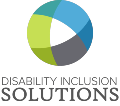Thirty years ago, President George H.W. Bush signed into law the first comprehensive civil rights law for people with disabilities. The Americans with Disabilities Act (ADA) opened doors for so many people. It didn’t just make it possible for everyone with a disability to live a life of inclusion and equality, it also gave the community legal recourse when those rights were not provided.
Advocates for the rights of people with disabilities are often asked about the ADA and its significance. As we celebrate the 30th Anniversary of the ADA, Joyce Bender and Andy Houghton share their thoughts.
Personally, and as an advocate, what did the ADA mean to you when it passed? And what does it mean today?
Joyce Bender: When the ADA was signed, I had just begun to understand what it meant to be living with a disability. It was only a few years after I learned I had epilepsy and I had not yet joined the disability civil rights movement. I can remember seeing the news when the ADA was signed; it was not a headline, just mentioned. At the time, I had no idea just how much the ADA would impact my personal future and the future of all people with disabilities. As time would go on, I would become an advocate, start Bender Consulting Services, Inc., and join a crusade to change the landscape of our country’s workforce to include people with disabilities.
I have a signed picture from President George H.W. Bush hanging in my conference room in the Bender offices. He wrote: “To: Joyce Bender – A passionate advocate for the disabled – a true ‘point of light.’” That is what the ADA is, a true point of light within the darkness of stigma and ableism. This one thing, this action that did not warrant a headline to those who made decisions on what constituted news, would become a guiding force in my life – a beacon lighting the path ahead by showing what we can accomplish when we come together over a common belief of equality.
Today, I understand that the ADA is the most important civil rights legislation for Americans with disabilities. It sets the foundation for me to impact employment equality for people with disabilities. It’s important now more than ever. In ensuring the safety and equality of Americans with disabilities in overcoming the COVID-19 pandemic, it provides a promise to all those joining the disability community during this time, including the thousands of Americans who are gaining mental health disabilities.
The ADA means everything to me because it impacts not only my life, but the lives of all people who are seeking civil rights and quality of life.
Andy Houghton: I was 22 years old when the ADA was signed. At just 4 years after my accident, I was oblivious to the ADA and its importance. I had no idea the impact it would have on my life and the lives of others like me who were joining the disability community. I vaguely recall learning about it in the mid-90s and thought it could offer a good opportunity to consult with businesses on the importance of implementation of the ADA.
It wasn’t until I started visiting patients in hospitals that I realized how different and how much more accessible life was for people with disabilities following the ADA. I spoke to many folks who had lived with disability prior to the ADA. I learned their stories and the injustices they had experienced. When I began to travel internationally as a person living with a disability, I realized how good we had it because of the ADA. It gave me new appreciation for what leaders in the disability community had accomplished through the ADA.
Looking back, what did people with disabilities hope the ADA would be? Has the law lived up to the expectations? And what has it yet to accomplish?
JB: What people hoped for when the ADA was signed, was that they would have equality across the board, like people without disabilities; to live in a society where the bar would no longer be lowered due to stigma associated with disability. Despite the strides forward in the area of architectural inclusion, there is still much to be accomplished in order to eliminate ableism. The needle has not moved on the issue of employment. Over the next 30 years, that will be the change that will be seen. It’s the most critical change needed to in order to reach the ideal of true equality.
AH: The euphoria of the passing of the ADA and the frustration leading up to it gave way to a period of slow changes. I believe people with disabilities at the time hoped things would move a lot faster in terms of enforcement, education, training, and awareness. Over the next 30 years, I think technology, along with greater awareness of the talents of the disability community, will lead to understanding and an on-going commitment by businesses to level the playing field.
Has corporate America embraced the ADA enough in the last 30 years? Is there more support for it? More compliance?
JB: In 1995, when I first started Bender Consulting Services, thanks to Highmark’s support, it was so unheard of to hire people with disabilities into competitive job roles that a little company like mine gained national attention. When I won the President’s Award for hiring six people, I was shocked. I couldn’t believe I was receiving an award from President Clinton for the small difference I was making by hiring people with disabilities. But at the time, it was not considered a small difference. There was very little support in the business community when we started. But this is the journey we have seen – 20 years ago companies began to understand that their HR teams needed to understand disability employment; 10 years ago Diversity and Inclusion areas did not include disability. Now, disability is a part of diversity. The business community has started to get it, and with that comes the understanding that there is still more to learn. The good thing is that, though there is still much to be done, the conversation around disability employment is now on the radar.
AH: The greatest challenges in implementing the ADA over the last 30 years are the attitudinal barriers and lack of understanding of the capability that people with disabilities bring to the table. Over the last 10 years, there has been more corporate interest as organizations such as AAPD and Disability:IN collect data that share the benefits of hiring individuals with disabilities. Stories of how hiring people with disabilities can have a positive impact on the bottom line are opening doors and urging investors to demand this be a priority. Regulation and policy implementation such as 503 Focused Reviews by the Office of Federal Contract Compliance Programs are helping to drive change by requiring employers to report on inclusion factors and demonstrate change. Employers have started to realize the importance of training, and are looking for solutions that are beyond a yearly seminar given to a handful of employees. They’re looking for something that shares their commitment across the entirety of their enterprise – including the areas of hiring, customer service, procurement and business suppliers.
Without a doubt, great strides have been made. Thirty years later, however, people with disabilities are still twice as likely to be unemployed as those without disabilities. One solution to make every workplace an inclusive workplace is education and awareness. The iDisability® e-learning platform can be an effective tool. Over 2 million business users across a variety of industries have already used our 38 distinctly different and practical modules to develop their brand and support their staff. Experience it for yourself.





0 Comments